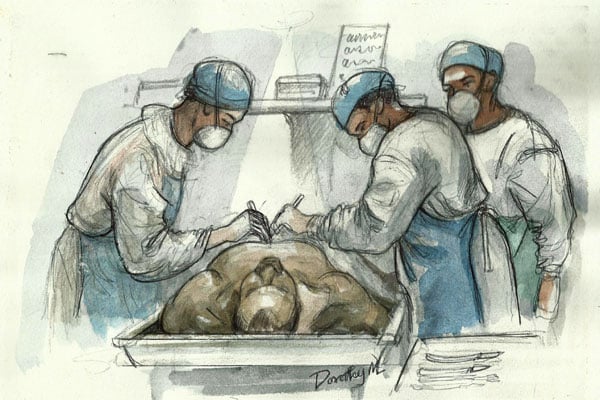Explaining unexplained deaths

What you need to know:
- Sudden death is a death from natural causes that occurs within six hours of the onset of symptoms in an apparently healthy subject or in one whose disease is not so severe that a fatal outcome would be expected.
Death sometimes occurs suddenly and unexpectedly and such deaths may fall under what is medically known as “sudden death”.
Sudden death is a death from natural causes that occurs within six hours of the onset of symptoms in an apparently healthy subject or in one whose disease is not so severe that a fatal outcome would be expected. Deaths attributed to some poisons, often dramatic and occurring in an apparently healthy persons may mimic sudden death. It is therefore important to rule out foul play in a suspected case of sudden death.
The heart has been a leading culprit in the causation of sudden death that the term sudden cardiac death was coined and in 1985 the World Health Organization defined it as a non-violent, unexpected death occurring less than 24 hours from the onset of symptoms. Some scientists have defined it a natural and unexpected death as a result of cardiac causes that occur within 1 hour of the onset of new symptoms.
Investigating sudden deaths
In many jurisdictions, the law mandates that an inquest be carried out in all suspicious deaths, sudden deaths inclusive.
An inquest is a legal inquiry into a death and is usually conducted by an officer appointed under the law. The inquest usually includes the request for a medico-legal post-mortem examination.
The police, who are often the lead investigators, request for a post-mortem examination when a case of sudden or suspicious death is reported to them. Relatives of the deceased have a right to ask for a post-mortem examination, and should certainly be involved in the investigation of such deaths. Information about the health of a person who has died suddenly is important in the investigation of sudden death.
This information should include any ailments the deceased may have suffered, the medications the deceased may have been on, his or her medical records, the events, suspicious or otherwise, preceding the death and more importantly, the circumstances of the death.
These will offer vital insights to the medical team performing the post-mortem examination.
The post-mortem examination
Needless to state, there must be a formal request for a post-mortem examination in a case of sudden death, and such an examination should be carried out by a competent team led by a medical doctor.
The family of the deceased is ideally represented during the post-mortem examination, as well as other parties. In addition, a forensic photographer preserves the photographic evidence.
The post-mortem examinations must be thorough and should include photography, the external examination of the body, dissection of the body, and taking of samples for toxicology and histology. It is vital to examine the body for signs of violence, injection marks or pathology such as subtle swelling of the lower limbs which may point to a heart disease.
The body is then dissected and all the major organs such as the heart, the brain, kidneys, liver and lungs individually examined and any relevant abnormality noted and samples from the organs taken.
The samples are then taken to the appropriate laboratories and the relevant tests are then carried out. It takes from between four to six weeks to come up with a comprehensive and conclusive report and such a report should not only establish the cause of death but explain the circumstances of the death.
Obvious causes of death
The cause of death in some cases of sudden death may be apparent; these include a tear in the heart leading to bleeding in the sac enclosing the heart, bleeding in the chest cavity or abdomen from a weakness in the aorta, a blood clot in the major vessels taking blood to the lungs (pulmonary embolism), and a blood clot occluding a major vessel of the heart leading to a myocardial infarction or heart attack. When such pathologies are discovered, evidence of such should be preserved for peer review.
These, however, should not be an end in itself. Further investigations are useful to understand how and why the fatal event occurred.
Other causes of death
The most common causes of sudden death include abnormal electrical activity of the heart (medically known as arrhythmias), a heart attack, a tear in of the heart muscle, bleeding in the brain (stroke), massive blood clots in the lungs, and tear in the aorta.
However in all these there is an underlying disease, which if it had been managed appropriately would have prevented the sudden death.
Arrhythmias are a leading cause of sudden death especially in persons who have a pre-existing heart disease, including a previous heart attack.
Abnormal electrical activity of the heart is also been known to occur in illicit drug use. Fatal arrhythmias are a diagnosis of exclusion at a post-mortem examination, especially if the deceased had a heart disease for which tests were not carried out.
The electrical activity of the heart is detected when a patient is alive and records of these will help a medical team to establish a cause of death.




